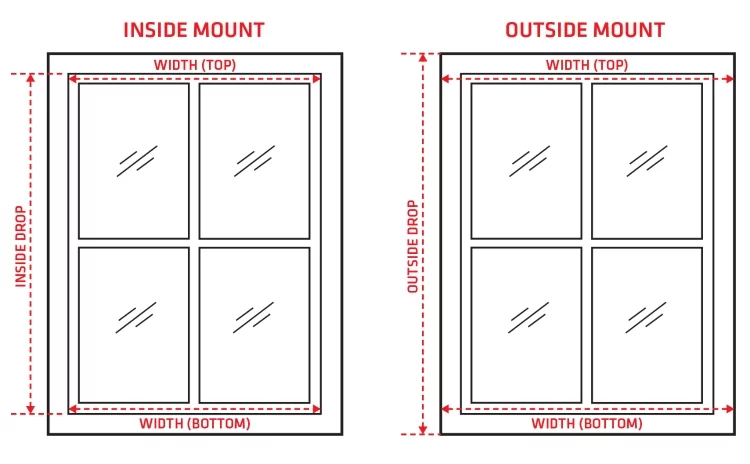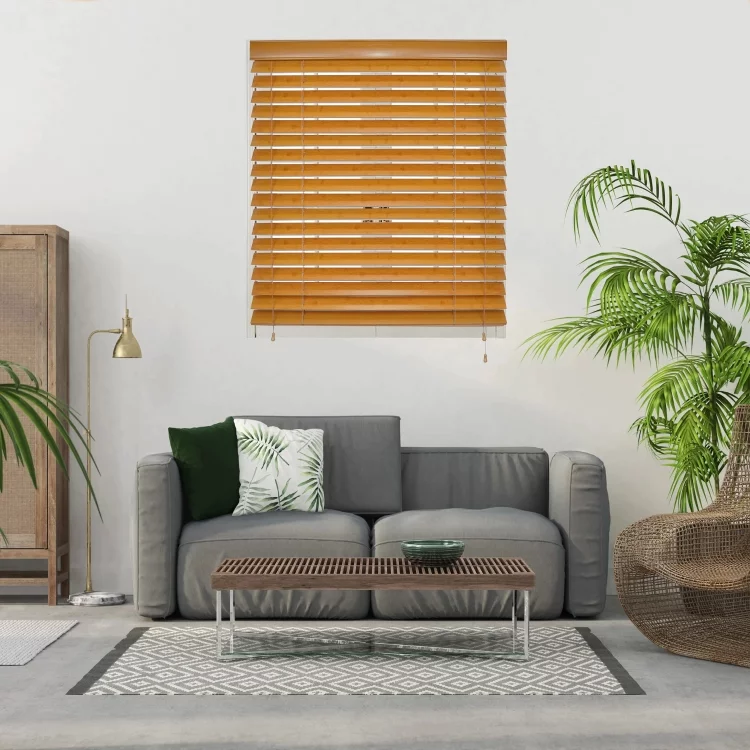How to Install Window Blinds DIY
by Robert Fox
Rather than waste your money on getting blinds installed, why not do it yourself?
Contents
How to Install Window Blinds DIY

With the right tools and a little help from us, your new blinds will be up and running in no time. Start by reading the first step, and go from there. But first, make sure you have the following:
- Blinds (accompanied by supports, an upper rail, a valance and its fixings)
- A meter
- A carpenter's level
- A pencil
- A drill
- Screws
Step 1. Measuring the Window Frame
Measure your window frame. You will obviously have to measure the window in question in order to buy blinds of the appropriate size. To do this, use a tape measure or a meter stick, if you want to go super old school.

Note that you can mount your blinds inside and outside the window frame. By installing the blinds on the outside, you will allow the opening to look bigger (this is also true for blinds). On the other hand, this same opening will appear narrower if you install them inside. An indoor installation will also make the room brighter, as the light will filter through the edges of the blinds.
Take measurements for installation outside the frame : take measurements along the outer edges of the window frame. Calculate the exact distance between the top of the frame and the lower edge of the frame (or window sill if applicable).
Next: take measurements for installation inside the frame: this time, place the meter inside the frame, at the joint between the glass and the frame. Also measure the width of the window at the top, middle and bottom of the frame. If these measures are different, take the smaller one for reference.
Step 2. Buying Your Blinds
Buy your blinds according to the measurements you have just made. There are many types of blinds: vinyl, aluminum, wood or even photovoltaic. Make your choice according to your personal preferences.
If you plan to install aluminum blinds in a nursery or in your children's room, make sure they are covered with certified lead-free paint.

Step 3. Trace small marks in preparation for editing
Unpack your new blinds that you've just purchased and start by checking that all parts are present. If instructions accompany the package, follow them as you follow the instructions below.
You will then have to make small marks on the window frame, to know where to place the supports of your blinds.
For installation outside the frame: Hold the blind where you want to install it, so that the top rail is centered in the window frame (between the two vertical slats that form the frame of the window). Pull a small pencil line on the frame just below the top rail. Also make a small mark about 0.6 cm (¼ inch) at each end of the rail.
For Indoor Frame Installation: Place the top rail inside the frame. Make sure it is straight, even if the window is not. Trace small marks at each corner of this rail.
Step 4. Position the Supports
Open the small shutter of the shade holder and hold it in place. Of course, place each support inside the space delimited by the lines you have drawn previously. You will find that there are two open sides on the support. One of them must face you, while the other must face the center of the opening. Pay attention that the small shutter is facing the inside of the room.
If the small support flap is difficult to open, retest with your finger or a screwdriver.
Mark the location of your screws. Using your pencil, mark the places where you will need to drill the holes that will host the screws (you will need to drill two). For a more robust support, opt for diagonal holes. So remove the supports, before checking that both locations are at the same level, thanks to a carpenter level.
For installation outside the frame: The supports must be placed on the outside of the frame, on each side of the window.
For installation inside the frame: The supports must be placed near the top corners of the window, inside the frame.
Drill the holes for the screws. Each support is accompanied by two screws. If your window frame is wood, use a wick with a diameter of 1.5875 mm (1 / 16th of an inch). In this way, the hole will be slightly narrower than the screw that will hold the bracket. Then replace the brackets, before screwing them firmly.
If you drill holes in plasterboard, plaster, concrete, tile, stone or brick, use appropriate bits, screws, and dowels. Also follow the instructions that accompany them.
Step 5. Install the top rail and its valance
Install the clips of the valance. These clips are used to attach the top rail to the cover that will hide it. The valance (or box curtains) is indeed what covers the upper rail to give it a look a little more pleasant. The clips on this cover must be installed at the front of the top rail before it is attached to the brackets.
It is possible that your blinds are made of a kind of slats scale. If this is the case, install each clip near the top of each scale and not directly at the top. Otherwise the clips for the valance may become entangled in the cords of the blinds.
Arrange the top rail in its brackets. Once you have finished screwing the brackets, make sure the flaps of the brackets are fully open before inserting the top rail. Then close the small shutters to fix this rail. When you close them, you should hear a fairly clear slam.
Secure the valance. Arrange the cover in the position you want to give it, along the top rail. In doing so, place it on the clips intended to hold it. When the cover is correctly positioned, gently press down to attach it.
Attach the opening rod of the blinds. If your new awnings have an opening wand and it's not already in place, it's time to install it. Release the hook from its plastic sleeve, insert the end of the rod into this hook and replace the protective sleeve.
Extra Tips
- Do not forget to read the instructions that accompany your new stores.
- Ask someone to help you maintain the blinds.
- Have someone drill the holes for the screws if you have never used a drill.
More from my site
 |
 |
 |
 |

About Robert Fox
Rob Fox is a former hydro worker who used to teach self defence in Miami for 10 years. He's currently enjoying his retirement, playing cribbage and golf with his buddies, locksmithing and home security in his spare time. Rob is an avid reader, and has even written a few books on the subject of self defence.
Thoughts on "How to Install Window Blinds DIY"
 |
 |
 |
 |
You can Get FREE Gifts. Furthermore, Free Items here. Disable Ad Blocker to receive them all.
Once done, hit anything below
 |
 |
 |
 |